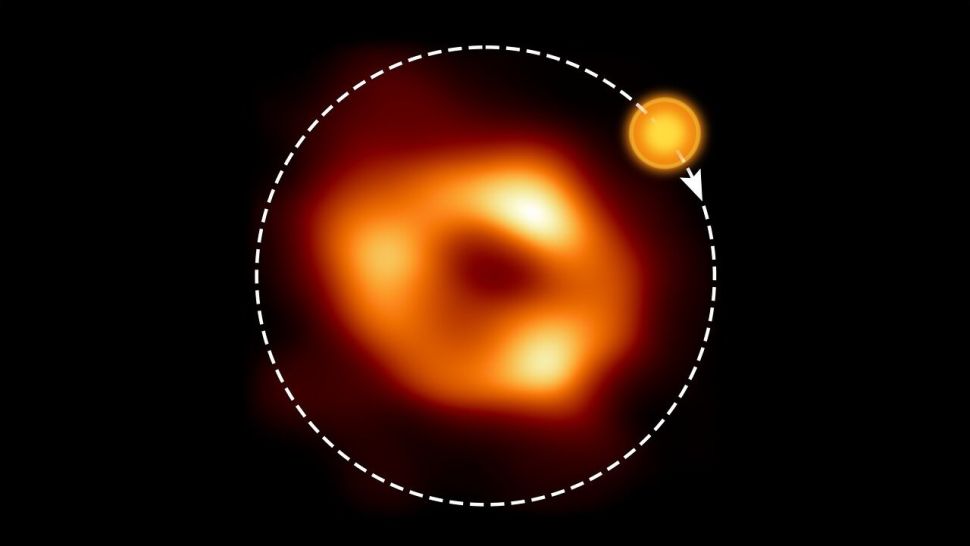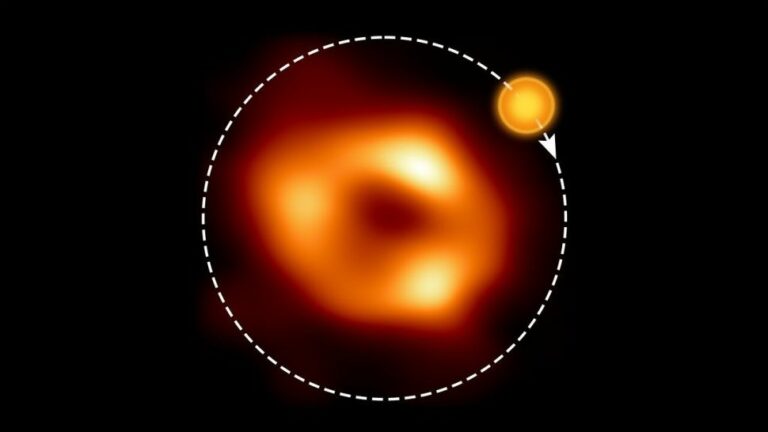Hot gas bubble found orbiting Milky Way’s supermassive black hole
Astronomers using the Atacama Large Millimeter/submillimeter Array (ALMA) in Chile have discovered “signs of a ‘hot spot’ orbiting Sagittarius A*,” according to the European Southern Observatory (ESO)
The orbiting spot could be a bubble of hot gas whipping around Sagittarius A* at around 30% of the speed of light.
Sagittarius A* (Sgr A*), the supermassive black hole at the center of our Milky Way galaxy, has been identified by astronomers as having a bright “hot spot” spinning around it.
The research team speculates that the ‘hot spot’ may really be a bubble of hot gas circling Sgr A* at a speed of up to 30% the speed of light. The finding may contribute to a better understanding of the turbulent environment surrounding Sgr A* in particular and at the galactic core.
Astronomers have determined that Sagittarius A* (Sgr A*), the supermassive black hole at the heart of our Milky Way galaxy, has a bright “hot spot” rotating around it.
According to the study team, the so-called “hot spot” might really be a bubble of hot gas revolving around Sgr A* at a speed of up to 30% the speed of light. The discovery might aid in improving our knowledge of the tumultuous conditions in the galactic core and in particular those around Sgr A*.

As part of the Event Horizon Telescope (EHT) collaboration’s work to image black holes, Wielgus oversaw a group that gathered observational data using the Atacama Large Millimeter/submillimeter Array (ALMA) telescope, which is made up of 66 radio antennas dispersed across the Atacama Desert in northern Chile.
In 2017, ALMA and other EHT telescopes began monitoring supermassive black holes. As a result, the supermassive black hole at the center of the galaxy Messier 87 was captured in the first-ever photograph of a black hole, which was published in 2019. (M87). The initial picture of Sgr A* was revealed by the same cooperation earlier this year.
However, ALMA also captured data at the same time as Sgr AEHT *’s observations. In those data, hidden in the measurements produced by just ALMA, Wielgus and his team discovered hints regarding the characteristics of Sgr A* and its environs.
The finding was made possible by ALMA’s collection of some data following a flare-up of X-rays from the Milky Way’s core that was noticed by NASA’s Chandra X-ray Observatory. In the past, researchers have connected flares like this one to magnetic interactions in hot gas bubbles that rapidly circle Sgr A*.
The fact that such flares were previously only plainly visible in X-ray and infrared views of Sagittarius A* is what Wielgus called “truly novel and exciting.” Here, for the first time, is a very convincing proof that circling hot spots may be detected by radio measurements.
The team hypothesizes that the hot spots observed at infrared wavelengths may be caused by gas bubbles that cool down and become visible at longer wavelengths of light (such as those observed by ALMA).
Astrophysicist from Radboud University in the Netherlands and member of the EHT cooperation team Monika Mocibrodzka added in the same release, “Now we discover solid evidence for a magnetic genesis of these flares and our observations provide us a clue about the geometry of the process.” The development of a theoretical analysis of these occurrences is greatly aided by the new data.
Polarized radio wave emissions from Sgr A* may be studied by astronomers and astrophysicists using ALMA, and these emissions can be used to examine the magnetic field encircling the supermassive black hole. The experts anticipate that the new research will aid in this examination by tightening restrictions on the magnetic field’s form and the specifics of Sgr Asurroundings. *’s
Additionally, the findings support earlier work that suggested that X-ray flares originate from gas clumps rotating at 30% the speed of light near black holes. This earlier work was based on data from the GRAVITY instrument on the Very Large Telescope (VLT) in Chile.
The team is now hoping that GRAVITY and ALMA will be able to track these hot spots in a variety of light wavelengths. This would build on direct observations of Sgr A* and its surroundings by the EHT and could be a significant step in our understanding of the physics of flares at the Milky Way’s core.
Wielgus stated, “Hopefully, one day, we will feel safe declaring that we ‘know’ what is going on in Sgr A*.
A paper detailing the team’s findings is published in the September issue of the journal Astronomy & Astrophysics.
Source: SpaceCom
Do not forget to share your opinion with us to provide you with the best posts !




0 Comments